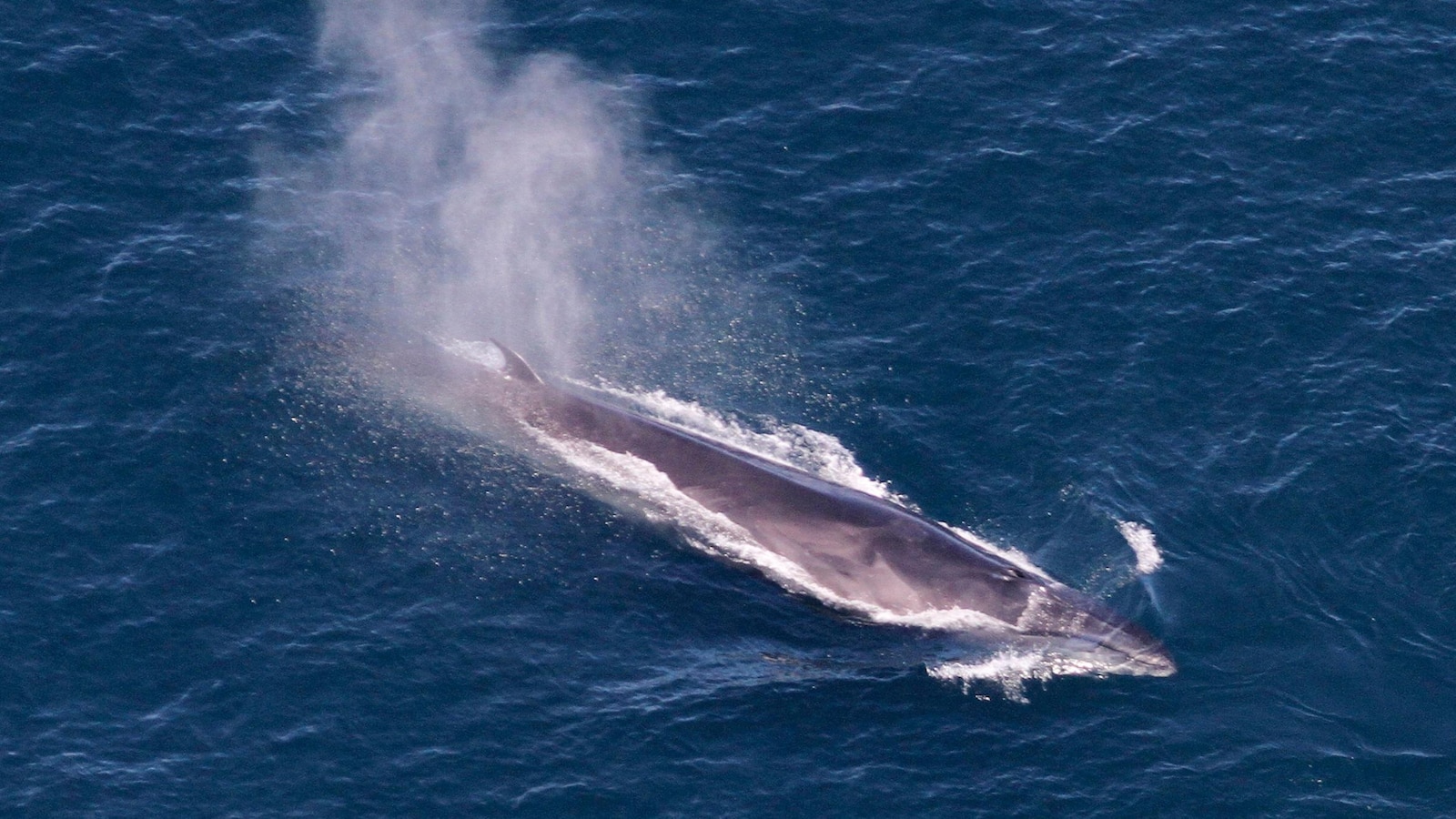
A large number of whales visiting the waters off New England included an uncommon sighting of an orca eating a tuna and an unusually large group of an endangered species of whale, scientists said.
A research flight made 161 sightings of seven different species of whale on May 25 south of Martha’s Vineyard and southeast of Nantucket, officials with the National Oceanic and Atmospheric Administration said Thursday. The sightings included 93 of sei whales, and that is one of the highest concentrations of the rare whale during a single flight, the agency said.
Other highlights included two orcas – an uncommon sight off New England – one of which was toting the unlucky tuna in its mouth, NOAA said. There were also endangered North Atlantic right whales as well as humpback, fin, minke and sperm whales, the agency said.
The sightings do not necessarily represent 161 individual whales, because observers could be sighting the same animal more than once, said Teri Frady, the chief of research communications for the NOAA’s Northeast Fisheries Science Center. However, the observers clearly reported “a lot of whales,” Frady said.
“It is not unusual that there are a lot of whales in the area this time of year. But since we do not survey every day, or in the same areas every time we fly, catching such a large aggregation with such a variety of species on one of our flights is the exception rather than the rule,” Frady said.
Observers logged three sightings of the North Atlantic right whale, which has been the subject of new proposed fishing and shipping regulations in an attempt to protect it from extinction. There are less than 360 of the whales left on Earth, scientists have said.
The large whale group appeared in an area that is “increasingly important as year-round core habitat for North Atlantic right whales and other large whale species,” said Gib Brogan, campaign director with conservation group Oceana. The whales are “swimming in harms way” until the U.S. finalizes strict rules to protect them from collisions with large ships and entanglement in commercial fishing gear, he said.
“Oceana is concerned about the protection of these whales from vessel strikes and entanglements, the two leading causes of death for large whales in the U.S. Atlantic,” Brogan said.
In recent weeks, there has been a surge in whale sightings off the coast of New England, much to the delight of marine enthusiasts and conservationists alike. Among the various species spotted, the most notable have been the endangered Sei whales, adding a sense of urgency to the need for continued efforts in marine conservation.
Sei whales, known for their sleek bodies and distinctive dorsal fins, are one of the largest species of baleen whales and are classified as endangered by the International Union for Conservation of Nature (IUCN). Their population has been significantly reduced due to commercial whaling in the past, making sightings of these majestic creatures all the more special.
The recent increase in Sei whale sightings is a positive sign for their recovery, as well as for the overall health of the marine ecosystem in the region. Scientists and researchers are hopeful that this trend will continue and that more efforts will be made to protect these vulnerable animals.
In addition to Sei whales, other species such as humpback whales, fin whales, and minke whales have also been spotted in abundance off the coast of New England. This diversity of whale species is a testament to the rich biodiversity of the region’s waters and serves as a reminder of the importance of preserving these habitats for future generations.
Whale watching tours have reported an uptick in bookings as people flock to the coast to catch a glimpse of these magnificent creatures in their natural habitat. These tours not only provide an opportunity for people to connect with nature but also raise awareness about the importance of marine conservation and the need to protect these animals from threats such as ship strikes, entanglement in fishing gear, and habitat degradation.
As we continue to witness an increase in whale sightings off the coast of New England, it is crucial that we remain vigilant in our efforts to protect these animals and their habitats. By supporting conservation initiatives, advocating for responsible whale watching practices, and reducing our impact on the marine environment, we can ensure that future generations will have the opportunity to experience the wonder of these incredible creatures for years to come.


